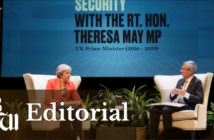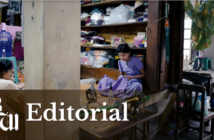Moments after arriving on campus for orientation, first-year students at Lehigh received colorful drawstring bags full of papers with information about campus and the university. The papers in the bag contained straightforward information to help the students through the few days before the start of classes.
If they were first-year students at the University of Chicago, however, there may have been a letter from the dean of students, John Ellison, explaining that the university does not support trigger warnings or safe spaces where “individuals can retreat from ideas and perspectives at odds with their own.” This letter, which was sent to first-year students before their arrival on campus, has sparked debate about safe spaces on college campuses. The debate focuses on the benefits and drawbacks of allowing students to express opinions if they offend or trigger other students.
A safe space, which originated as the idea of a space where marginalized groups could gather to discuss issues pertaining to their marginalization, now seems to be perceived as a term that refers to a space where only the most politically correct, inoffensive opinion is allowed to be expressed. The space is sometimes specific, as in a room or building, but other times colleges affirm that the entire campus is a safe space. This sort of safe space tends to prevent students on one side of an argument from presenting their views on hot-button issues.
Morton Schapiro, the president of Northwestern University, wrote in The Washington Post in support of safe spaces where students of similar marginalized backgrounds can come together to discuss issues they are facing. He argued that these spaces should not be the location of “uncomfortable learning.” While some learning can occur without discomfort, it is difficult for students to learn about differing perspectives and come to understand these perspectives — regardless of if they agree with them — if they are not engaging in uncomfortable dialogue.
If there were a letter about safe spaces in the drawstring bag of every first-year student at Lehigh, what should that letter have conveyed? To start, it should be made clear that individuals expressing controversial opinions should have the right to express them in a respectful manner. That is not to say that blatant attacks by individuals or groups should be tolerated, but opinions on all ends of the spectrum should not be suppressed. Christina Paxson, the president of Brown University, wrote in The Washington Post that safe spaces should be a “safe space for freedom of expression.”
Even the most unpopular opinion should not be removed from a conversation, and students should be willing to and have the ability to discuss all sides of an issue. A safe space that protects students from unpopular opinions should not be encouraged on college campuses such as Lehigh.
Students should be free to express themselves without fear of being shamed for expressing an opinion that does not fall in line with the “safest” view.
The line between what a university will and will not tolerate should be clearly defined, but all other items of discussion should be allowed and even promoted. For example, homophobia should not be tolerated, but open discussion about gay marriage and gay rights should be encouraged. People should be told outright that their opinion is not welcome.
While the safe spaces that refer to areas where unpopular opinions are suppressed may create a comfortable atmosphere for some, these spaces also create a false sense of security. Higher education is meant to prepare students for the so-called real world, and that cannot be fully done if universities are going to extraordinary means to coddle their students and protect them from certain rhetoric that they will experience upon graduation. Classrooms specifically should not be safe spaces where specific opinions are not addressed or are suppressed.
If the university works to promote diversity of ideas and experiences, students will have to confront others with different opinions and ideas. The difference in opinions may lead to uncomfortable discussions but will ultimately create a more understanding student body. While these discussions may create conflict and the need for a place for students to feel comfortable, they should seek this comfort through friends or outside areas. It is not the job of the university to make students feel comfortable by shielding them from certain opinions, but it is the job of the university to provide students with the opportunity to learn about different perspectives and ideas in an environment where students are encouraged to respectfully share their opinions.
There almost always are more than one side to an argument, and those sides should be fully presented when students are learning or debating about an issue. On college campuses, students should have the opportunity to openly debate and express their views without fear of retaliation. It is OK for students to agree to disagree on controversial and sensitive issues.
Instead of a safe space being a place where only one opinion is expressed, a safe space should be a place where individuals can all safely express their opinions with the intent of engaging in a conversation about their ideas and their perceptions of the world. If anything, colleges should be safe spaces for colorful discussions and academic growth though “unsafe” conversations.





Comment policy
Comments posted to The Brown and White website are reviewed by a moderator before being approved. Incendiary speech or harassing language, including comments targeted at individuals, may be deemed unacceptable and not published. Spam and other soliciting will also be declined.
The Brown and White also reserves the right to not publish entirely anonymous comments.